What Makes A Cannabis Plant Turn Purple?
Cannabis is typically thought of as a green plant, but there are certain varieties that also show colors like red and purple. You may be wondering, what makes a cannabis plant produce colors like that? There are a few different reasons why plants either exist in these color ranges or have the ability to change color.
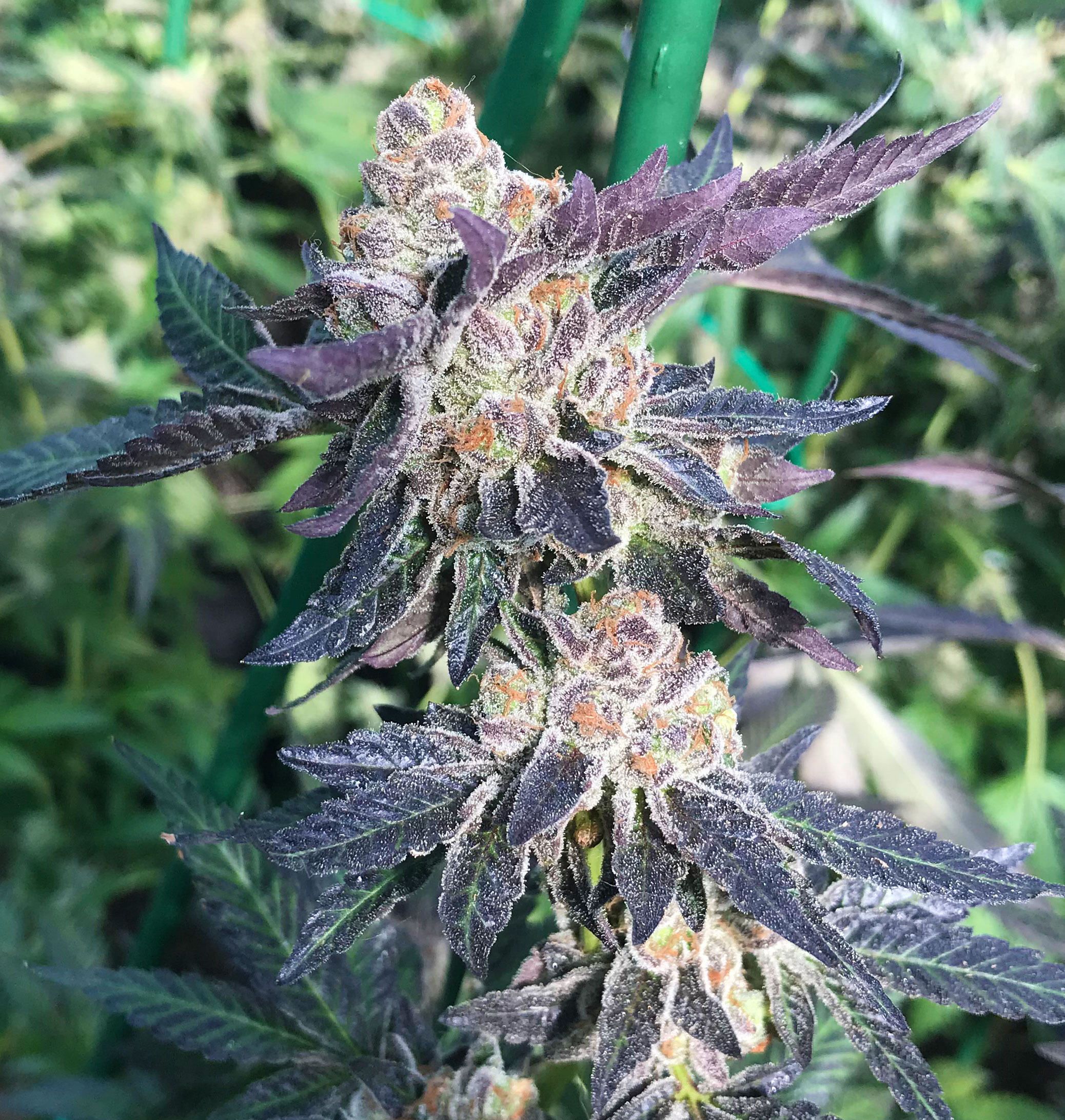 Certain varieties of cannabis show colors like purple, red, blue, and black depending on certain factors
Certain varieties of cannabis show colors like purple, red, blue, and black depending on certain factors
Genetics: The #1 Factor Of Color In Cannabis
Light is composed of wavelengths, with each wavelength appearing as a different color. Light is absorbed by pigments naturally occurring in objects, but depending on the object being exposed to the light, not all wavelengths are absorbed. Instead, certain wavelengths are reflected away from the object. The wavelength or color that is reflected away is the color the object appears to our eyes. The pigment that makes cannabis green – along with most plants – is chlorophyll. The substance that makes cannabis purple is called anthocyanin, which is a group of around 400 pigments that are water soluble and categorized as flavonoids. The genetic makeup of a plant will determine what pigments (or color) it will have. Genetics are the #1 factor that influences the purple color of a plant based on how many anthocyanins are present.Environment: The Other Factor
Many scientists believe certain plants developed genetic coding for pigmentation based on environmental factors – to attract pollinators, or as a defense mechanism, to protect themselves from harmful sun rays and pests. Most cannabis plants, if not all, will remain green throughout the vegetative stage and will only begin to show color once they begin flowering, which is when a plant is most likely going to be targeted by pests and pathogens. The most noticeable color changes typically show up in the last 7-14 days of flower. And while many plants only exhibit color on their flowers, cannabis plants can also show color on their leaves, stems, branches, and trichomes. This is because anthocyanins are present throughout the plant.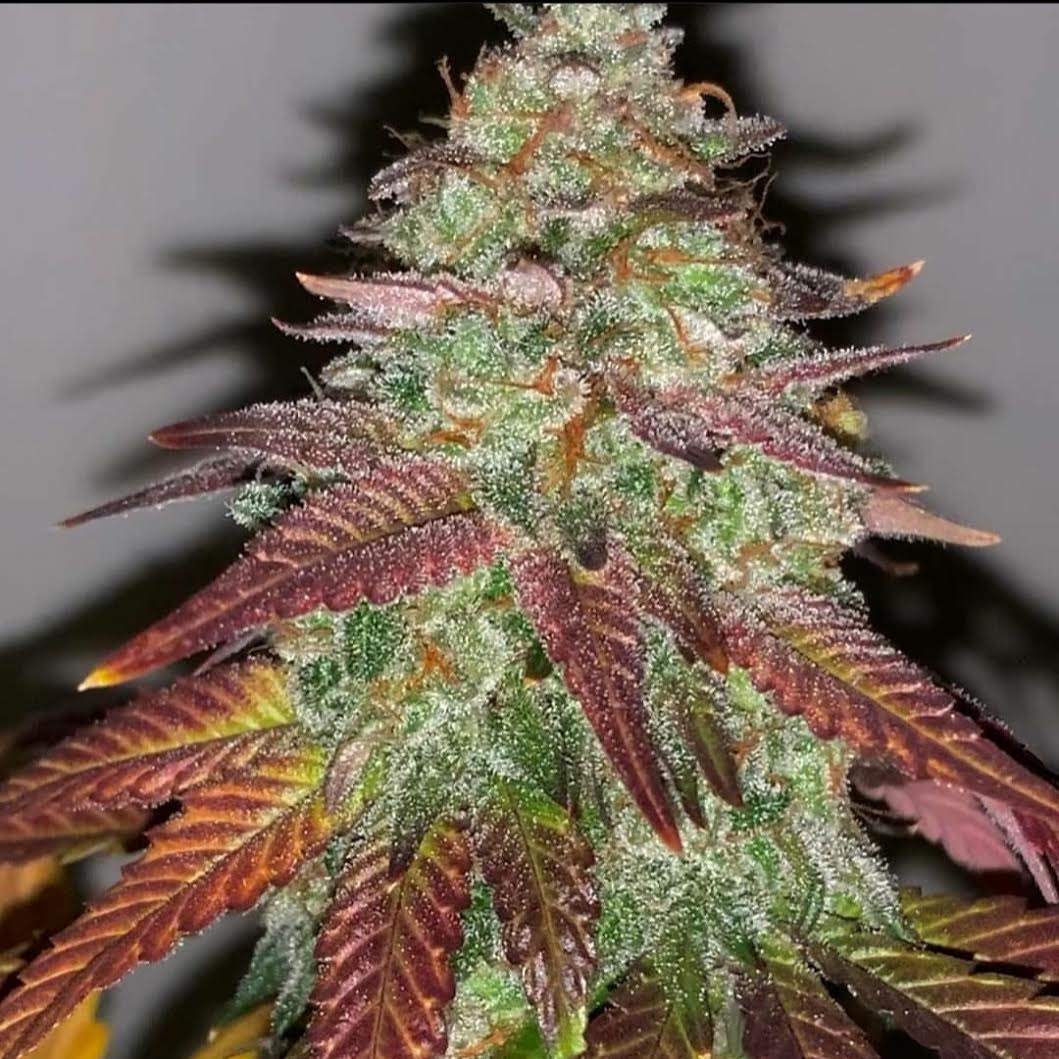 Environmental factors greatly affect the look of a cannabis plant like this Lemon Cherry Cake
In addition, anthocyanins do not always appear purple, and depending on the environment, can appear as pinks, reds, blues, and black. Pinks and reds appear in acidic mediums, purples appear in neutral mediums, and blues are present in more alkaline environments. While pH and nutrient imbalances can influence plant color, healthy cannabis plants change color for other reasons as well.
Another environmental factor that influences color in certain cannabis varieties is temperature. Similar to the color-changing leaves in Fall, cooler temperatures (60+/- degrees F) cause a cannabis plant’s chlorophyll to break down into sugars that are used by the plant. With the dominating chlorophyll pigments broken down, anthocyanins become visible.
Environmental factors greatly affect the look of a cannabis plant like this Lemon Cherry Cake
In addition, anthocyanins do not always appear purple, and depending on the environment, can appear as pinks, reds, blues, and black. Pinks and reds appear in acidic mediums, purples appear in neutral mediums, and blues are present in more alkaline environments. While pH and nutrient imbalances can influence plant color, healthy cannabis plants change color for other reasons as well.
Another environmental factor that influences color in certain cannabis varieties is temperature. Similar to the color-changing leaves in Fall, cooler temperatures (60+/- degrees F) cause a cannabis plant’s chlorophyll to break down into sugars that are used by the plant. With the dominating chlorophyll pigments broken down, anthocyanins become visible.
Strains That Turn Purple
Purple and colored cannabis varieties are fun to grow and help keep things interesting in the garden. If you’re looking to try a strain that turns purple, here are some recommendations (crosses of the following will also change color):Cherry Pie
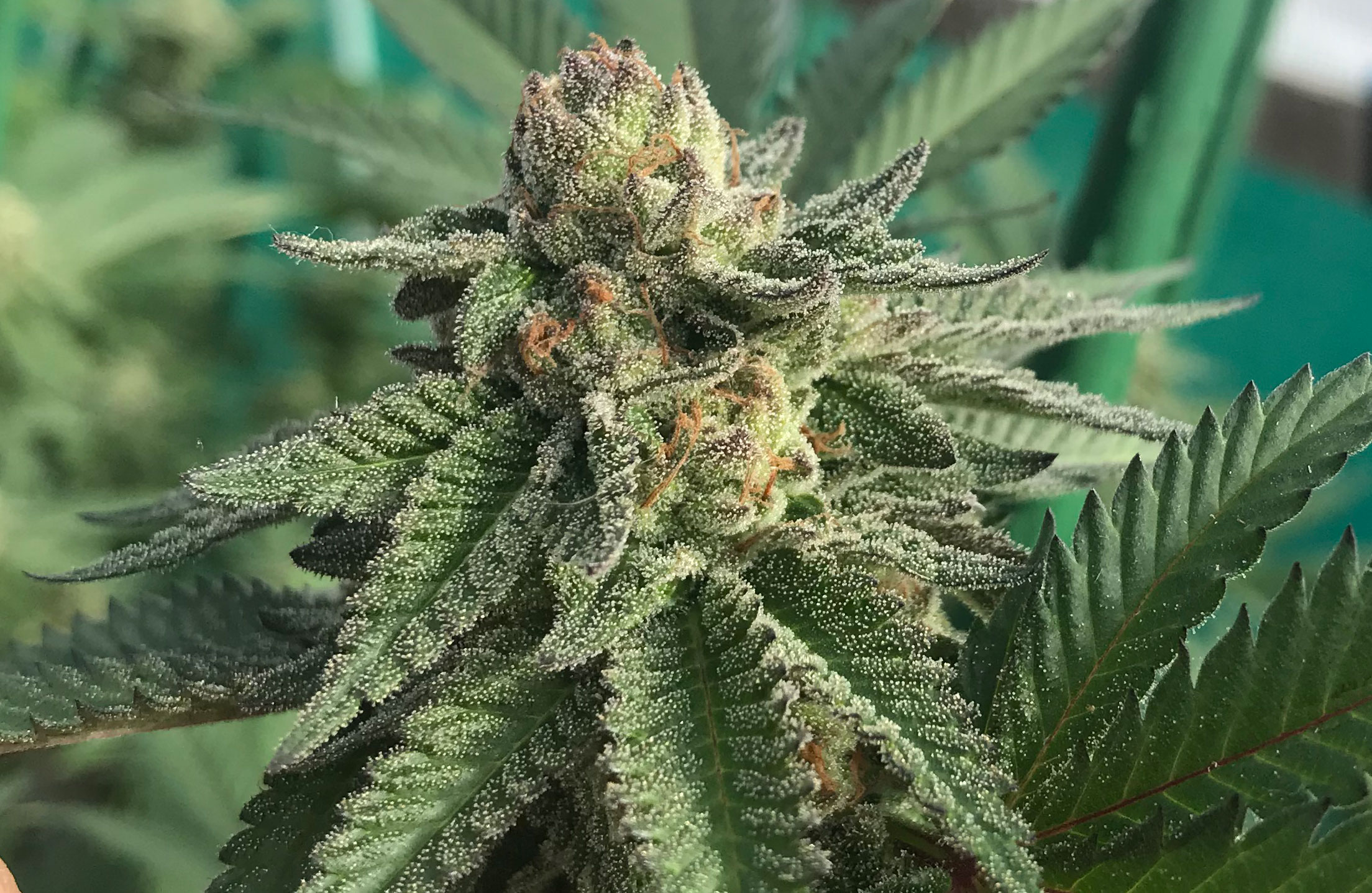 Cherry Pie is known for its great taste, aroma, and beautiful colors
Hours of Relief: 2.5+ hours
Effects: Moderate strength, Indica
Good For: Anxiety, relaxation, depression
Flower Characteristics: Cherry pie aroma, cherry fuel taste
Plant Characteristics: Medium internode spacing, greasy, beautiful color, prone to mold in high humidity, can herm when stressed but pollen is sterile, moderately yielding
Best For: Indoor
Flowering Time: 8-9 weeks
Cherry Pie is known for its great taste, aroma, and beautiful colors
Hours of Relief: 2.5+ hours
Effects: Moderate strength, Indica
Good For: Anxiety, relaxation, depression
Flower Characteristics: Cherry pie aroma, cherry fuel taste
Plant Characteristics: Medium internode spacing, greasy, beautiful color, prone to mold in high humidity, can herm when stressed but pollen is sterile, moderately yielding
Best For: Indoor
Flowering Time: 8-9 weeks
Forum Cookies
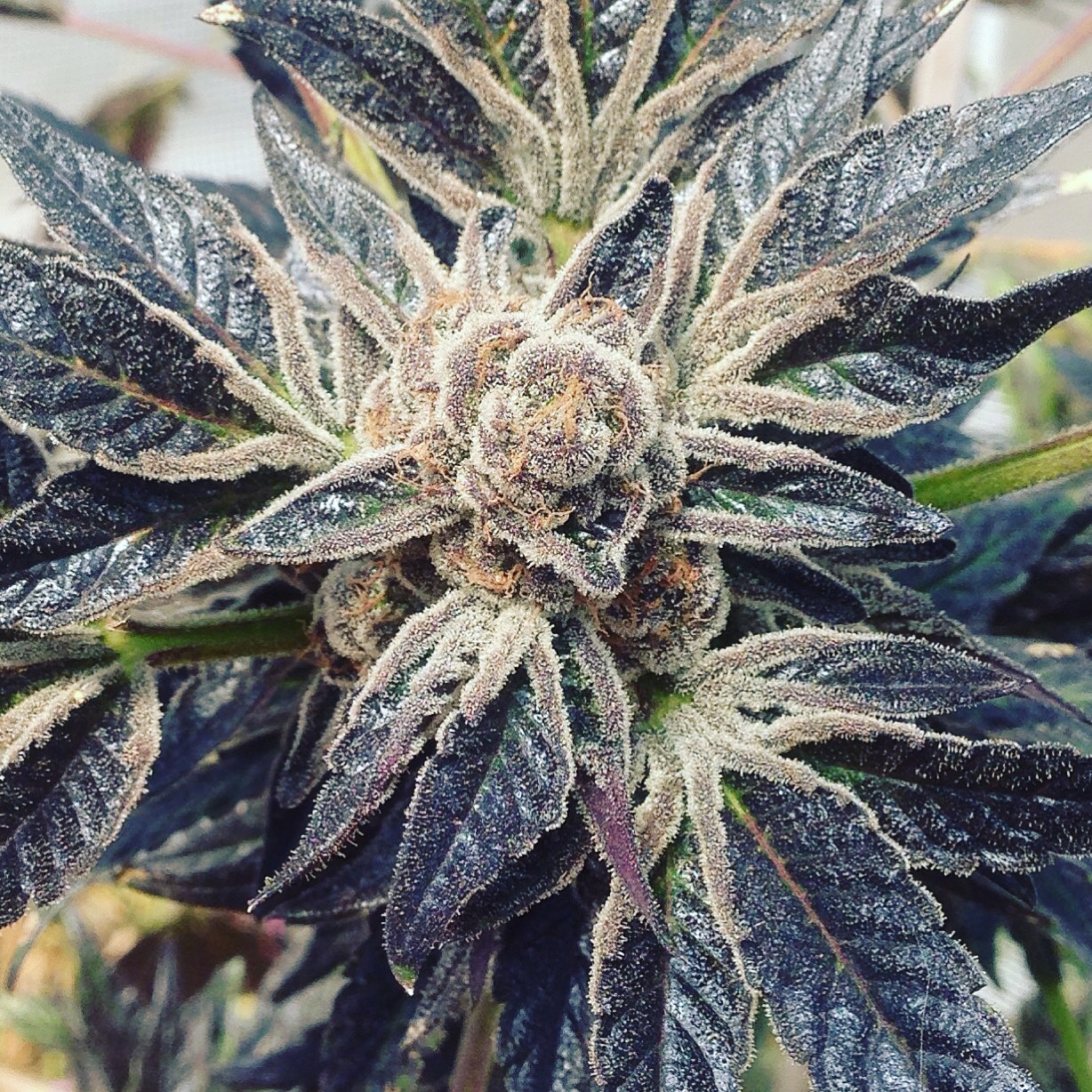 Forum Cookies grown outdoors in the Hawaiian Islands
Hours of Relief: 3+ hours
Effects: Strong
Good For: Euphoria, creativity, functional pain relief
Flower Characteristics: Fresh ground pepper and cookie dough aroma
Plant Characteristics: Slow to moderate veg, medium internode spacing, high bract to leaf ratio, beautiful color in cooler temperatures, small to moderate yield
Best For: Indoor or greenhouse
Flowering Time: 9-10 weeks
Forum Cookies grown outdoors in the Hawaiian Islands
Hours of Relief: 3+ hours
Effects: Strong
Good For: Euphoria, creativity, functional pain relief
Flower Characteristics: Fresh ground pepper and cookie dough aroma
Plant Characteristics: Slow to moderate veg, medium internode spacing, high bract to leaf ratio, beautiful color in cooler temperatures, small to moderate yield
Best For: Indoor or greenhouse
Flowering Time: 9-10 weeks
Sunset Sherbet
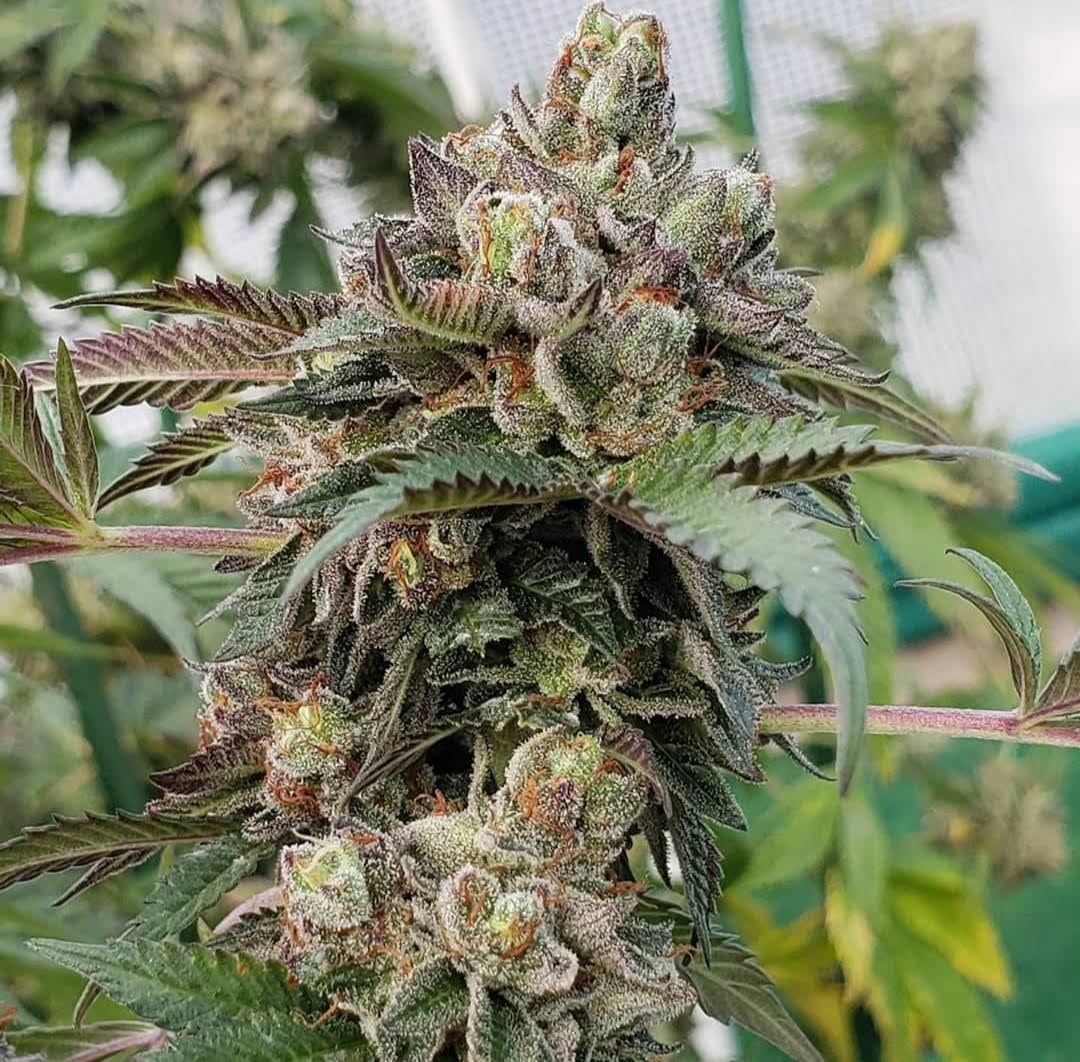 Purple and colored cannabis varieties are fun to grow and help keep things interesting in the garden
Hours of Relief: 3.5+ hours
Effects: Moderate strength
Good For: Anxiety, pain relief, PTSD, relaxation, insomnia, appetite stimulation
Flower Characteristics: Aroma and taste are fruity and sweet with a hint of creaminess
Plant Characteristics: Medium internode spacing, dense flowers, beautiful color in cooler temperatures, prone to mold in high humidity, moderately yielding
Best For: Indoor
Flowering Time: 9-10 weeks
Purple and colored cannabis varieties are fun to grow and help keep things interesting in the garden
Hours of Relief: 3.5+ hours
Effects: Moderate strength
Good For: Anxiety, pain relief, PTSD, relaxation, insomnia, appetite stimulation
Flower Characteristics: Aroma and taste are fruity and sweet with a hint of creaminess
Plant Characteristics: Medium internode spacing, dense flowers, beautiful color in cooler temperatures, prone to mold in high humidity, moderately yielding
Best For: Indoor
Flowering Time: 9-10 weeks
